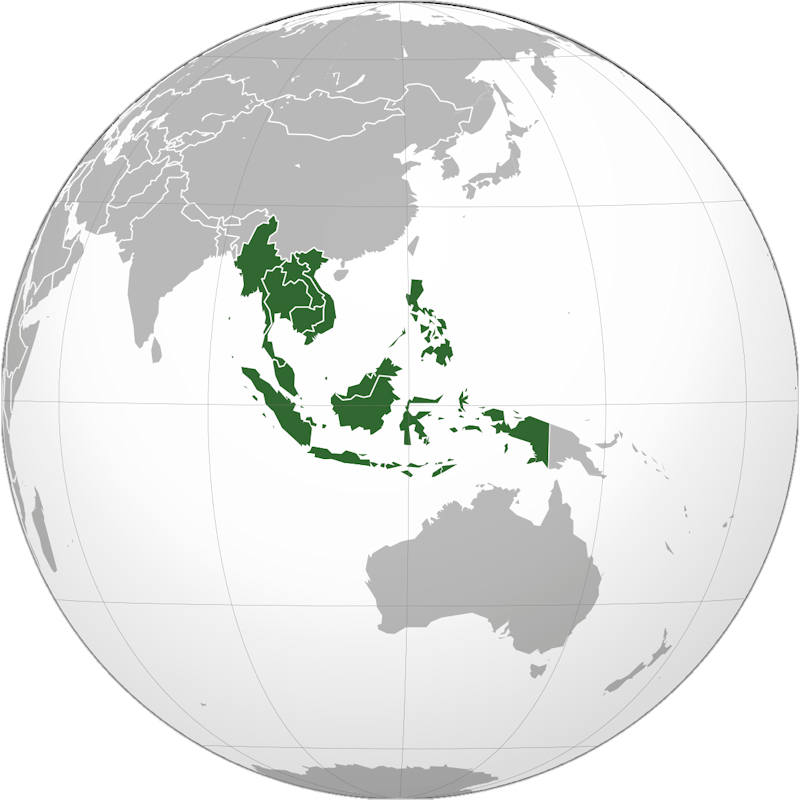The marketing blurb for Amitav Acharya’s most recent book From Southeast Asia to Indo-Pacific begins, rather portentiously, “Southeast Asia was created by geopolitics, and it might die with it.” The book itself, thank goodness, is a considerably more measured (and clearly-written) overview of how Southeast Asia and ASEAN came to be more or less synonymous and how the region, as a region, might fare in the newly-turbulent world of the second quarter of the 21st century.
Whether Southeast Asia exists at all other than in some international relations imaginary is a question of some dispute. Historians like Eric Thompson have made reasonable arguments that Southeast Asia hangs together as a concept, rather consistently, over millennia. Acharya himself writes:
Until the 20th century, there was no Southeast Asia in name, but there was always a sense of a separate, but connected universe of lands and waters. Indians called it Suvarnabhumi (golden earth) while the Chinese called it Nanyang (South Seas).
He goes on:
To a large extent, the conception of Southeast Asia as a region is a product of the historian’s imagination. In the aftermath of World War II, some Western historians working on Southeast Asia began to ‘imagine’ its past as a distinctive region. They were rebelling against an excessively Indo-centric and Sino-centric view of Southeast Asia.

Whatever the past, Acharya’s main concern is whether the region will remain significant, something he to a large extent equates with the future of ASEAN. The central part of the book deals succinctly with the development of political Southeast Asia, for which the 1955 Bandung Conference was a key milestone, not so much because it was about the region (its remit and purpose was much wider than that) but because it
enabled the rise of Southeast Asia as a site of regionalism, especially by diminishing the relative influences of both India and China and by paving the way for the emergence of a regionalism led by the weaker states of Southeast Asia, as a precursor to ASEAN.
Readers of a certain age will have lived through the various stages in ASEAN’s development but it’s worth remembering that the current coincidence of political and geographical Southeast Asia is relatively recent:
ASEAN is a much bigger entity now than when it was established in 1967. Membership expanded in the 1990s to bring in Vietnam, Laos, Myanmar, and Cambodia, with East Timor likely to become the eleventh member.
Much as EU membership has come in many ways to define “Europe” (cf “Brexit”), ASEAN has come to signify Southeast Asia. Papua New Guinea is usually considered part of, say, Oceania rather than Southeast Asia; if it were admitted to ASEAN, one imagines that designation might change. Acharya notes, meanwhile, that Ceylon (now Sri Lanka) was originally included in Southeast groupings; Bandung, he writes, was “sponsored by five Asian countries—India, Pakistan, Ceylon, Burma, and Indonesia (collectively known as the Conference of South-East Asian Prime Ministers or the Colombo Powers).”
ASEAN has been proclaimed endangered or irrelevant before, yet has managed to keep going and, by some measures, cohere. In some ways, the Sino-US tension makes it even more relevant. Yet Acharya is of the view that the current geopolitics may spell its demise, de facto if not de jure, Southeast Asia being littered with obsolete acronyms:
The Southeast Asia Treaty Organization (SEATO), set up by the US in 1954 as part of its anti-communist strategy, attracted only two Southeast Asian members—Thailand and Philippines—and died unceremoniously in 1975.
In Acharya’s telling, any cloud over ASEAN appears not so much to be its cohesion in face of China and the US trying to get member countries to pick sides, but rather that any future success of the newly-defined “Indo-Pacific” will subsume it and relegate it to the periphery of a larger region of strategic and economic focus. Acharya is unconvinced about the Indo-Pacific as currently constituted as a US-led security architecture, but thinks that the history of the region has much to recommend it:
The historical Indian Ocean region, before the arrival of European imperial powers, was a thriving commercial and cultural region that no one—whether India or China—dominated but everyone benefitted from.
But in the Indo-Pacific, whatever its merits, “ASEAN has been relegated to a passenger’s seat.”
Acharya is something of an Indian Ocean cheerleader, and has another recent book dedicated to the subject: Divergent Worlds: What the Ancient Mediterranean and Indian Ocean Can Tell Us About the Future of International Order. Nevertheless, From Southeast Asia to Indo-Pacific is refreshingly free of the sound of axes being ground. “Regions are like fashion”, he writes:
they change their names and colour with passing time and taste. For example, the larger geographic space within which Southeast Asia is located has been variously called ‘Far East’, ‘Asia’ (1940s–50s), ‘Asia-Pacific’ (1960s–80s), and ‘East Asia’ (1990s–2000s)… While the term ‘Far East’ came from imperialists (Britain in particular), ‘Asia’ from nationalists, ‘Asia-Pacific’ from economists, and ‘East Asia’ from culturalists, the Indo-Pacific comes from military-strategists.
ASEAN and the region it encompasses nevertheless seem too large and too important to be a mere flight of fancy. One has to think that if Southeast Asia didn’t exist, someone would have to invent it.


You must be logged in to post a comment.